Concept
We drew inspiration from the sundew, a carnivorous plant. We wanted to create a growing and shrinking effect reminiscent of a sundew curling up around its prey.

What we created was Tube-a Two, a dynamic sculpture consisting of two red fabric tubes growing out of a wooden box. After they reach their full height, strings inside the tubes are pulled, causing them to collapse and curl up onto themselves, only to then regrow to their original height.
The piece consists of a wooden box with two red tubes emerging from the top. The wooden box houses an inflatables fan along with two PVC pipes that support the red tubes. A string runs through the center of each of the tubes down through and out the side of the box.

Successes
We were happy with the overall effect that we were able to achieve with our piece. We wanted our piece to undergo dramatic changes during our performance and we successfully able to achieve that. We were able to create different types of motion with our tubes including a slow initial growth phase, a dramatic collapse when the strings were pulled, and a tight helical spiral when the strings were pulled further.
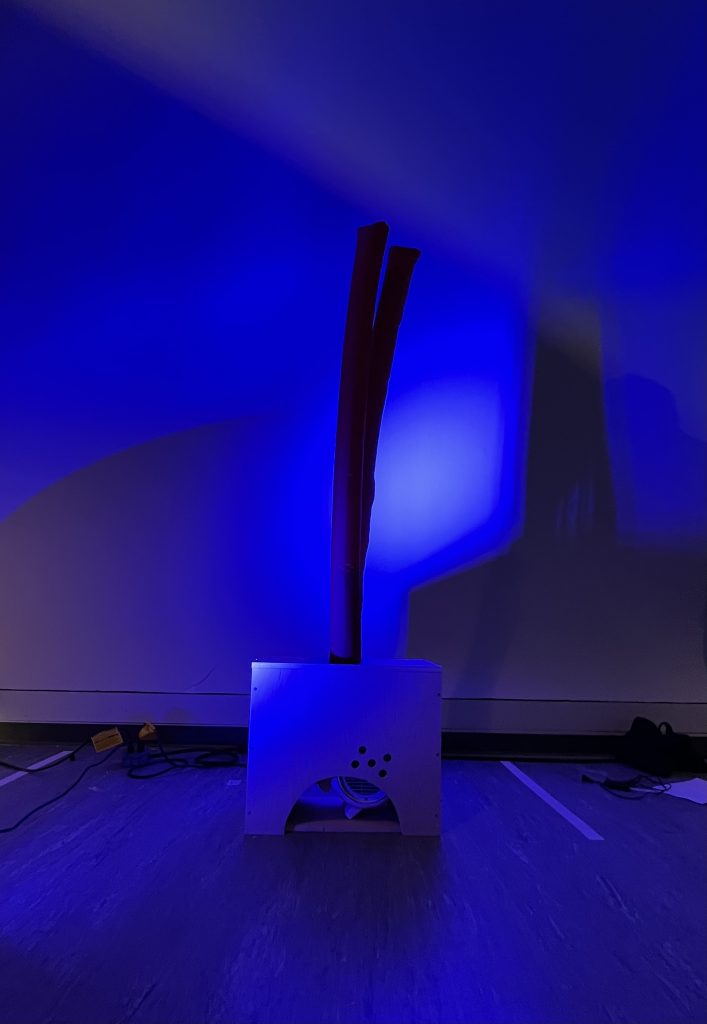
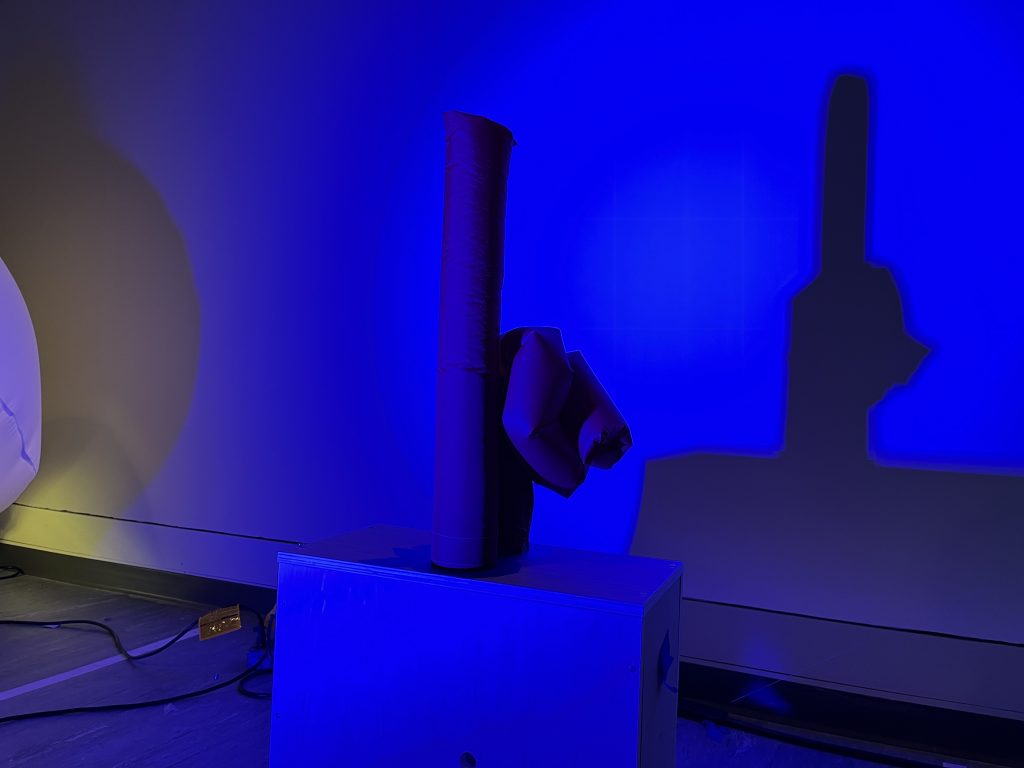
We worked with Carmyn on the euphonium to add music to our performance. They were able to play in accordance to the movement of the tubes to amplify the effect of our piece.
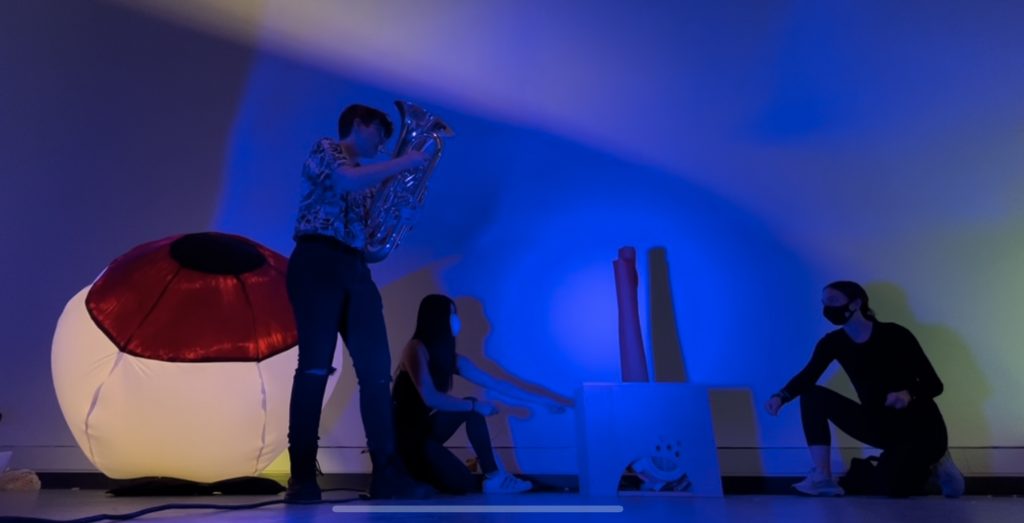
Failures
When we first started this project, we knew that we wanted a growing and shrinking plant mechanism, but we were not completely sure how to create the type of motion that we wanted. We experimented with several different methods involving heat sealed pouches, but we were unable to get the dramatic level of growth that we wanted.


Olivia came up with the idea of putting a string inside of a fabric tube on top of an inflatables fan and pulling and releasing the string to create the growth effect.
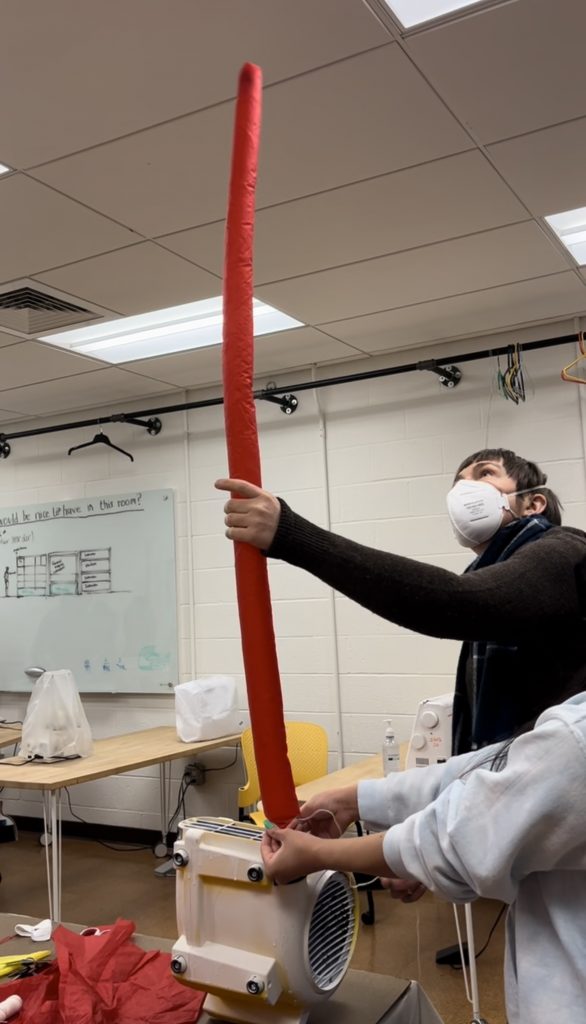
One problem that we ran into is that original strings got caught in the friction of the tube and broke, so we replaced them with lower friction fishing string.

The largest challenge that we faced during this project was creating a stable structure to support the tubes. We tried to balance what would provide enough structural support to withstand the forces of the strings being pulled with the materials that we had available.
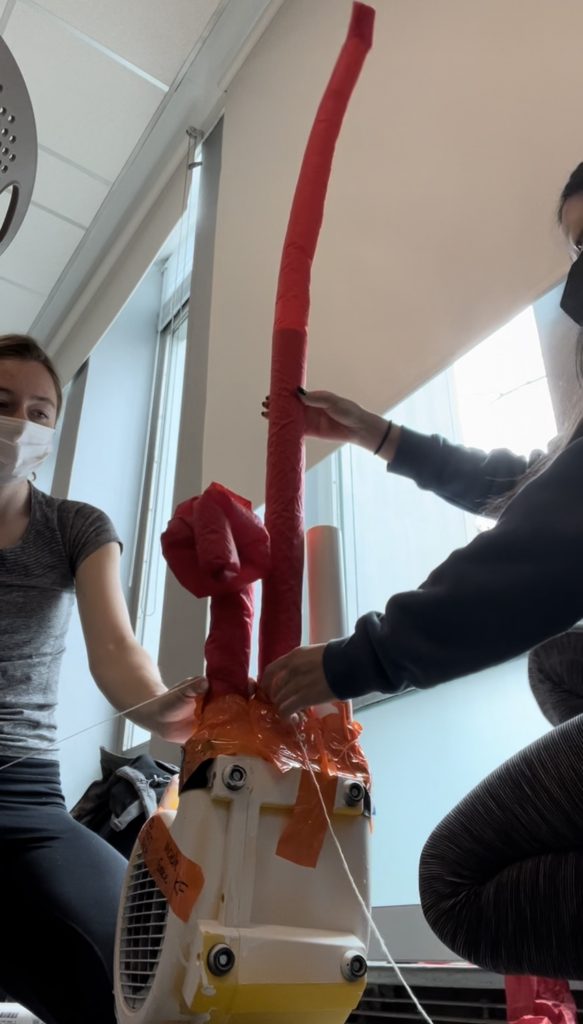
Garth and Olivia helped us come up with possible box structures to hold the PVC pipes in place and support the tubes during the growing and shrinking phases. We tried using a cardboard box, but it was not very stable in holding the pipes in place over the fan, especially when the strings were pulled.

We then tried a plastic storage box and a cardboard manifold, but although functional, was not the most durable.

We decided that it would be best to create a box out of wood to house the fan and support the pipes. A huge thank you to Olivia for designing and spending 4 hours in the library with me building the box from scratch.
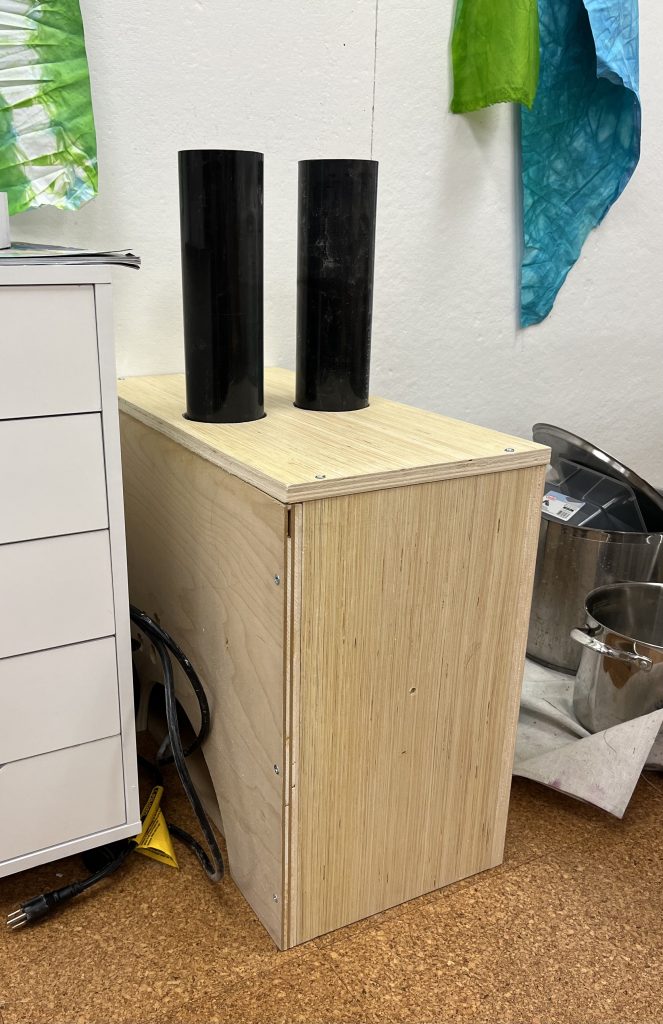
We also had problems with not enough air going into the tubes to fully inflate them. To solve this issue, we created a pants-shaped manifold that attached to the top of the fan and connected to the base of the tubes to direct the air into the tubes. However, despite the addition of the manifold, the tubes struggled to stand up again on their own after being collapsed. We incorporated reaching up to stabilize the tubes as part of the performance, which was acceptable, but was not part of our original plan.
Since the top of the box was not removable, fully assembling the piece proved to be a challenge in itself. The holes in the manifold were not much larger than the PVC pipes, and it was a dexterity challenge to get the manifold around the pipes inside of the box.
Related Works
Stanford vine robots: https://www.vinerobots.org/
Leave a Reply
You must be logged in to post a comment.